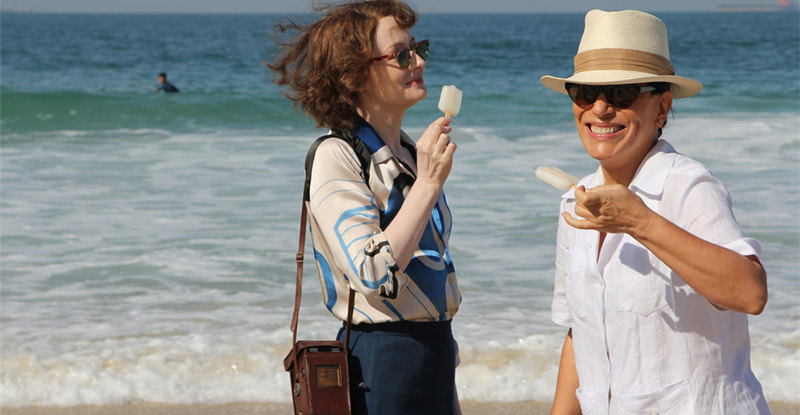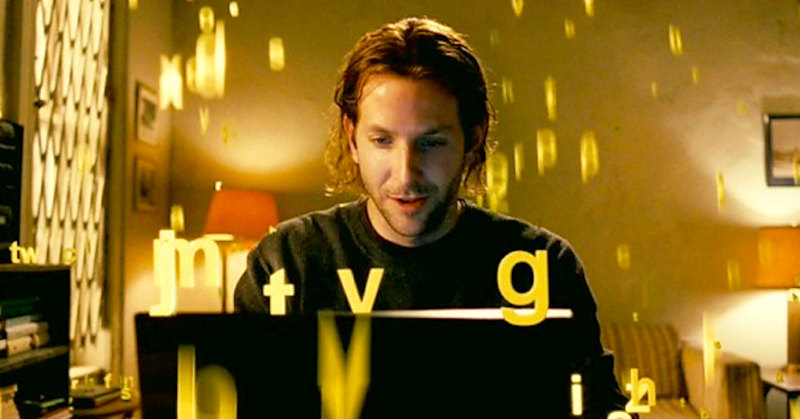Has HBO set a new standard in television with its new series “Game of Thrones”? With the huge success of “Six Feet Under,” “The Sopranos,” “Deadwood,” and “Rome,” HBO remained synonymous with the best theatrical experience, right in your home. By “theatrical” experience, I am implying HBO’s effectiveness in picking a fascinating theme and employing every filmmaking technique, especially modern special effects and rich production values, without any compromise. Indeed, some of the best and highest quality shows come from HBO. But, with “Game of Thrones,” HBO has again raised the bar of modern television and continues its unchallenged dominance in home entertainment.
HBO’s “Game of Thrones” is based on the first book, “A Game of Thrones,” in the hugely popular “A Song of Ice and Fire” series, written by George R.R. Martin. “A Game of Thrones” is no ordinary book; it is dense with convoluted plot lines, featuring many characters. The story takes place somewhere in Middle Earth, in which we are presented the lives of Knights, Kings, and Queens, mixed with fantasy and mystery. From a fantasy perspective, Martin has crafted a deep, enormous world ruled by mighty rulers, where warriors wielding Valyrian steel win wars and bring glory to their homelands. The entire setup is intricate, as details are added to the plot in each chapter of the book. Unlike the traditional narrative style that progresses based on the main plot, Martin banks on a character-heavy narration in which the novel’s chapters are based on the characters. Martin’s idea was to deliver a story that is developed by its characters, and how they are gradually pulled by events beyond their control; the events slowly change characters’ identities. Without a doubt, Martin has left no stone unturned in building various aspects of Middle Earth with painstaking details; the medieval armory, the mystical landscape where the winter can last for ten years, a deadly game of political treachery, and the regions guarded by families of the warrior class, form the core of Martin’s web-like world.
Surely, to construct Martin’s world for the screen is a daunting task. The book’s immense scope has the capacity to push the boundaries of what home entertainment can deliver to its audiences. With producers pouring money for this show, the team at HBO didn’t hold back because of budget constraints. Instead, the filmmakers freely utilized expensive special effects and built epic-scale production values, comprising of period-style dresses, weaponry, and majestic sets. As a result, the first season of “Game of Thrones” is engrossing and entertaining. The entire experience is further enriched as filmmakers strictly follow the source material. In fact, I was so entertained by the first episode that I decided to read the book alongside while I watch the series. As it turns out, I finished the book at the same time when I finished watching the HBO series. My conclusion, in the end, remains that HBO has done an incredible job in adapting Martin’s massive book and compressing the book for TV. In the process, filmmakers don’t compromise on details and present the show in an easy, digestible manner without ever becoming erratic or off-track.
“Game of Thrones” has a vast story line, so I am going to only present key story elements. The story begins in a cold Northern region called Winterfell that is headed by Ned Stark (Sean Bean); his men guard Winterfell by protecting a big 100-some-foot wall. Ned is married to Catelyn (Michelle Fairley), and they have three sons: Bran (Isaac Hempstead-White), Jon Snow (Kit Harington), and Robb (Richard Madden), and two daughters named, Sansa (Sophie Turner) and Arya (Maisie Williams). The events are set in motion when the king of the Seven Kingdoms, Robert Baratheon (Mark Addy), names Ned as the Hand of the King. Of course, this makes Robert’s wife, Cersei Lannister (Lena Headey) and his brother, Jaime Lannister (Nikolaj Coster-Waldau), quite unhappy. Cersei and Jaime plot something unimaginable, after Cersei’s son, Joffery (Jack Gleeson) comes to power. Ned is held captive, and is charged of treason. Sansa is forced to have an alliance with Joffery, while Arya manages to escape Joffery’s kingdom. Meanwhile, Robb gather his forces to protect the North, and Catelyn seeks new allies for Rob’s army.
Those looking for epic battles, wizardry, swordplay, and dragon slaying, will be left disappointed, at least in this edition of the series. I see “Game of Thrones” unfolding like a Shakespeare play that has a mix of everything: drama, romance, tragedy, and lively characters. Since the book and series strictly follows a character-driven narrative, the first half of the series throws many characters, belonging to different regions of Middle Earth. The characters are involved in an incredible amount of gabbing; they talk about their past victories, whoring, food, wine, and above all recollecting good times. The characters are properly fleshed out, and we understand the nature of their circumstances. The best part about “Games of Thrones” is its unique characters are interconnected to each other through inescapable situations.
Of all the characters, my favorite ones are, of course, Ned and Tyrion Lannister (Peter Dinklage). Tyrion is the dwarf brother of Cersei and Jaime–also known as the Imp—who makes a major impact on several key events in the story. Unlike other power-thirsty Kings, Ned is emotionally sensitive to the needs of the battle, and he exercises restraint in using his full powers. Even with his tall and heavy build, Ned is a warmhearted person, always operating by the book and thinking about his people. To him, death holds no meaning, and he is always willing to sacrifice his life without any fear, if it means peace for his people. Looking at his painful face, we realize he has witnessed bloodshed in battlefields. Even though, he is fully attuned to the events unfolding around him, he is still naïve in fully grasping the game of politics. Ned and Catelyn are like the ying and yang of the House of Stark (as used in the book), with Catelyn taking care of domestic matters while Ned is gone. Even in the midst of an impending political turmoil, Catelyn is calm, but worries about Ned’s welfare at all times, especially after Ned is named as the Hand of the King. Indeed, Ned is emotionally stable because Catelyn compliments Ned in all matters, and remains an active participant in demanding issues. Even in disagreements, Ned listens to Catelyn’s differing opinion, making him think of scenarios he would have missed otherwise.
Then we have Tyrion, who is probably the most-multifaceted character of the lot. He might be taken as a pushover because of his size, but with his sharp tongue, people don’t like to mess with him. Despite the fact he has never participated in a battlefield, Tyrion has fought many battles, though only in his mind. He clearly understands the nature of the war, and politics associated with it. Misunderstood most of the time, Tyrion possesses god-gifted negotiation skills, even when the odds are stacked against him. In one episode, Tyrion devises an escape plan that is plucked simply out of thin air, showcasing his brilliant ability to think on his feet. He is never afraid to speak candidly, and again, on a few occasions, we witness Tyrion utilizing his mind to the fullest by absorbing minute details in the aftermath of events leading to Ned’s capture. I can see Tyrion playing a significant role in the second season of the series, after his father elevates his position in the chain of command.
Politics forms the heart of every battle and wars are fought to quench the thirst for power. But, political games don’t get more complicated than this. The real conflict in “Game of Thrones” is not fought on a battlefield, but in the minds of power-hungry Knights and politicians who are manipulative and double-faced. This makes characters multifaceted and conflicted, with their intentions unclear from the onset. The story is able to insert drama, building tension scene-by-scene and episode-by-episode. It’s a rare feet to stay entertained and thoroughly glued for ten episodes. HBO’s series manages to do that exceptionally well.
Video:
HBO presents “Game of Thrones” in an aspect ratio of 1.78:1, encoded using an AVC codec. The show is mainly shot in Belfast and in the Northern region of Ireland and the greenish landscape shots look simply breathtaking in 1080p. There are so many “wow” moments in this transfer that I can say this is the best 1080p presentation I have seen for any TV series. The colors are deep and vibrant, with solid blacks and balanced contrast. The sharpness never fluctuates and hold steady even in the dark scenes. The detail is superb in every scene, and rich production values shine in the 1080p transfer. The close-ups are tight looking, revealing small detail possible. The skin tones are realistic, never appearing artificially modified.
Audio:
The 5.1 DTS-HD Master track is superb in every way. First, the dialogue gets a boost in this lossless track, as it is crisp and clear throughout. There are long sessions of talkative exchanges between the characters, and during that time, the front channels remain active. In the battle scenes, which are rare, the sounds of clashing of swords and metal gashing are realistically developed. During these moments, the rear channels are activated, providing for an immersive experience. In the nighttime scenes, we hear the ambient noises coming from the jungle and other creatures.
Extras:
First, we get seven audio commentaries on seven episodes including a solo commentary track by George J.J. Martin. “In-episode guides” are provided for each episode that gives a brief rundown on characters, location, and history of “Game of Thrones.” Up next, “The Complete Guide to Westeros” includes interactive maps and family histories. In addition, this also includes twenty-four short featurettes exploring the period details, religions, factions, families, and mythologies. Next, “Character profiles” is a profile of fifteen important characters from the show.
“Anatomy of an Episode: A Golden Crown” is an interactive picture-in-picture feature showing interviews with the cast and some behind-the-scenes footage. Next, “The Making of Game of Thrones” shows interviews with the cast, writer, and producers, talking about the challenges and technical difficulties involved in adapting Martin’s book for TV.
“From Book to the Screen” is a brief segment probably taken from the “Making-of” featurette, in which Martin and the producers discuss the complexity of Martin’s work and the difficult in adapting the book for the screen. Following this, “Night’s Watch” we need the soldiers of the Night’s Watch and take a brief tour of the Wall. “Creating the Show Open” provides an overview of the development process used to create the Emmy-winning opening title sequence. “Creating the Dothraki Language “describes how the new language was created. Finally, “Hidden Dragon Eggs” are like Easter eggs, each dragon icon leading to a hidden bonus feature.
Parting Thoughts:
“Game of Thrones” is an expansive character study, bringing in a slew of multifaceted, disparate characters that are brought together in an epic, multilayered story. The characters are captivating, capturing one’s attention right from the first episode. HBO’s show is in a different league altogether and the writers have successfully managed to distill the intricacies of Martin’s massive novel to the screen. I have read the book and watched the series at the same, and I can happily report that HBO’s series is one of the best screen adaptions one will likely see. Indeed, “Game of Thrones” is a well-acted, superbly produced, and brilliantly written series that I can’t recommend high enough.


